10 Great Cities for Raising Families By Caitlin Dewey 
Choosing a hometown for your family is a high-stakes game: Not only do
the kids need good schools, safe neighborhoods and parks to play in,
but parents also must know they'll be able to make a good enough living
to raise a family.
Ellicott City, Md.
City population: 56,397
Metro population: 2,690,886 (includes Baltimore and Towson)
Mean family income: $138,793 (nat. avg. = $82,719)
Median home value: $548,400 (nat. avg. = $192,400)
Employment growth: -0.1% (2005-2007, Baltimore Metro)
City school rating: 9 (on a scale of 1 to 10)
Violent crimes per 100,000 residents: NA
Ellicott City is exemplary of a ring of great communities surrounding Baltimore
that combine family-friendly living with proximity to big-name
employers and attractions for kids (like the popular Bubbleman kids'
night). It's just 20 minutes from downtown Baltimore (with its Inner
Harbor/ Aquarium complex) and 50 minutes from the nation's capital. Yet
the schools are better, the neighborhoods safer, and the cost of living
slightly lower than many suburbs in this region. Howard County boasts
one of Maryland's top school districts.
PROS: Great public schools geared toward college prep, high average family income, solid wage growth, 67 nearby parks.
CONS: Housing costs are relatively high, rush-hour traffic for Baltimore and D.C. workers a way of life.
Ann Arbor, Mich.
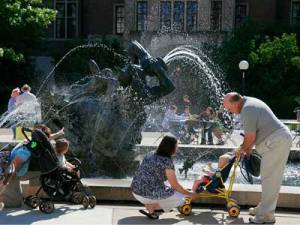 |
| Ann Arbor, Mich. / Area CVB |
City population: 114,797
Metro population: 347,563
Mean family income: $108,892
Median home value: $245,000
Employment growth: 0.3%
City school rating: 8
Violent crimes per 100,000 residents: 256 (455 is nat. avg.)
The Ann Arbor Public School District
is consistently ranked one of the best in the country, and its students
score far above average on state and national standardized tests. Add
that to the city's low crime rate and high family income, and you have a stable, progressive place to raise a family, 40 minutes from Detroit. Plus, it's the home of the top-ranked University of Michigan, with three museums and great NCAA sports programs.
PROS: Excellent public education, low violent- and
property-crime rates, more than 2,000 acres of city parks (including a
nationally noted arboretum), several kid-friendly museums.
CONS: Higher-than-average housing costs, sluggish
employment growth, accelerating urban sprawl and unplanned development,
long winters.
College Station, Tex.
City population: 83,200
Metro population: 203,557
Mean family income: $84,306
Median home value: $165,300
Employment growth: 4.7%
City school rating: 8
Violent crimes per 100,000 residents: 299
Great public schools and low crime aren't the only draws of this small Texas city. College Station
has also seen steady wage growth and a low unemployment rate of 6.9%.
Plus, there are plenty of cultural and athletic events at Texas A&M
University, an interactive children's museum, dozens of parks, and
playgrounds on the shores of nearby Lake Bryan.
PROS: A top-ranked public school system, affordable
housing and utilities, safe neighborhoods, solid wage and employment
growth, it's about a two-hour drive from Houston, Dallas, or Austin.
CONS: Unvaryingly hot climate, limited local employment opportunities outside of Texas A&M.
Kennewick, Wash.
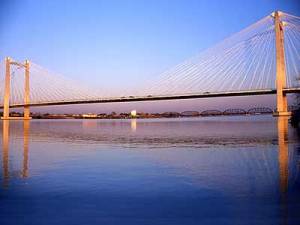 |
| Kennewick, Wash. / Mikel Louder |
City population: 67,953
Metro population: 245,649
Mean family income: $67,799
Median home value: $150,000
Employment growth: 1.0%
City school rating: 6
Violent crimes per 100,000 residents: 373
The Tri-Cities region (which includes Kennewick, Richland and Pasco)
is noted for its strong, research-based economy. It weathered the
recession with an unemployment rate of just 6.2% and plenty of
high-tech jobs pursuing nuclear and other forms of sustainable energy.
Overall the schools here are strong, especially in the Richland School District,
and parks and playgrounds are plentiful. The cities' location at the
intersection of the Snake, Yakima and Columbia Rivers guarantees active
families plenty of outdoor fun.
PROS: Low cost of living, affordable housing, a
strong science-and-tech-based economy, plenty of outdoor attractions,
falling crime rate.
CONS: Low family income, proximity to the Hanford nuclear site, locale in south-central Washington is remote from any major cities.
Huntsville, Ala.
City population: 165,464
Metro population: 406,316
Mean family income: $81,754
Median home value: $138,400
Employment growth: 3.6%
City school rating: 6
Violent crimes per 100,000 residents: 707
If you're after affordability, Huntsville is worth a look: Home prices are 20% below the national average, and the city's cost of living is 10% below the national norm for medium and large cities. Huntsville
also offers solid public schools, several thousand acres of woodlands
and natural parks and the South's largest children's museum. Consider
neighborhoods in the Madison County School District -- its test scores are considerably higher.
PROS: Extremely affordable housing, low cost of
living, solid public schools, traffic-less commutes, strong wage and
employment growth, promising opportunities in aerospace and military
tech.
CONS: High summer heat and humidity, high violent crime rate in the city and rising property-crime rates, lackluster schools in Huntsville proper.
Madison, Wis.
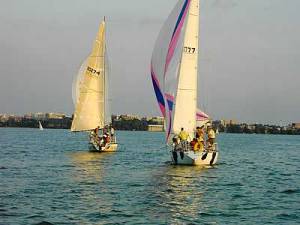 |
| Madison, Wis. / Charles Kenyon |
City population: 223,895
Metro population: 570,025
Mean family income: $93,006
Median home value: $219,700
Employment growth: 0.6%
City school rating: 4
Violent crimes per 100,000 residents: 385
Low crime, top-notch suburban schools and reasonable housing costs make Madison
a good choice for families. It's also a hub for biotechnology research
and has one of the lowest unemployment rates in the country. Its
educational focus shows in programs such as Wisconsin Covenant, which
guarantees students state college placement and financial aid in return
for B-or-better grades during high school. Madison's lakeside location offers plenty of recreational activities in its 5,000-plus acres of parks.
PROS: Reasonable housing costs, low crime and
unemployment rates, high-paying research and biotechnology jobs, great
health care, progressive education policies.
CONS: Above-average housing costs, uninspiring employment growth, bitterly cold winters, Madison city schools are weak relative to the suburban schools.
Pocatello, Idaho
City/Metro population: 90,273
Mean family income: $60,620
Median home value: $119,000
Employment growth: 5.6%
City school rating: 6
Violent crimes per 100,000 residents: 337
Housing and utilities are unusually cheap here -- Idaho's cost of living is very low compared to the state average nationally. The city also has safe neighborhoods, solid public schools and robust employment growth, especially in nuclear research. Pocatello
can't offer the same range of cultural attractions as a larger city,
but kids will enjoy the Pocatello Zoo, Idaho Museum of Natural History,
and the Ross Park Aquatic Complex, as well as plenty of outdoor
activities in the nearby Rocky Mountains. Salt Lake City and Yellowstone National Park are a day trip away by car.
PROS: Affordable small-city lifestyle, low overall
crime rates, solid employment and wage growth, quality public schools,
moderate four-season climate.
CONS: Low family income, limited cultural and religious diversity, growing concerns about methamphetamine use and gangs.
Rochester, Minn.
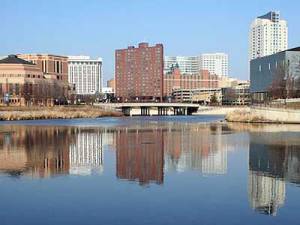 |
| Rochester, Minn. / Jonathunder |
City population: 101,659
Metro population: 182,924
Mean family income: $97,178
Median home value: $167,000
Employment growth: 6.2%
City school rating: 8
Violent crimes per 100,000 residents: 162
Rochester earns high ratings in almost every category, from great schools and low crime to high-paying jobs and plenty of parks. In fact, if you can get past the brutal winter weather, the so-called "Med City"
has plenty to offer, with a forward-facing economy anchored by the Mayo
Clinic and IBM. As for parks and other kid-friendly spots, look no
further than Silver Lake Park and the Quarry Hill Nature Center.
PROS: High family income, affordable housing, low
violent- and property-crime rates, thousands of acres of parks and
trails, high-ranked, prep-focused public schools, world-class health
care, commuter-friendly traffic.
CONS: Long, bitter winters (which is why many buildings are connected by underground walkways).
West Hartford, Conn.
City population: 63,908
Metro population: 1,190,512
Mean family income: $49,036
Median home value: $195,300
Employment growth: 1.6%
City school rating: 8
Violent crimes per 100,000 residents: 172
The city's crime and property rates are almost low enough to leave doors unlocked, and the West Hartford School District
has earned Department of Education accolades for schools such as the
top-performing, multi-track Hall High. However, the cost of living in West Hartford (which is two hours from Boston and New York) is 20% more than the national average.
PROS: Low crime, top-ranked schools (public and
private), proximity to major cities, a range of parks and historic
sites, up-and-coming downtown with a number of ongoing development
projects.
CONS: High cost of living, slow employment growth.
Raleigh, N.C.
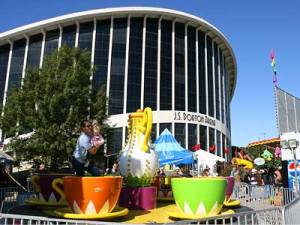 |
| Raleigh, N.C. / GRCVB/visitRaleigh.com |
City population: 367,959
Metro population: 1,084,404
Mean family income: $94,975
Median home value: $200,900
Employment growth: 6.4%
City school rating: 7
Violent crimes per 100,000 residents: 578
Employment is up, and the cost of living is down in North Carolina's capital,
a mecca for stable high-tech jobs. The region is also home to more
acres of parks per capita than most cities of its size. The Wake County School District is strong, too, with 77 schools of excellence and distinction -- the highest designations in North Carolina.
And Tarheel State residents live in a higher-ed sweet spot where
academic quality meets high levels of financial aid. The result: The
top-notch University of North Carolina at Chapel Hill is perennially
No. 1 on Kiplinger's list of Best Values in Public Colleges, N.C. State
is #10, and other UNC-system schools dot our top 100.
PROS: High family income, affordable family
housing, strong employment growth (especially in biotechnology,
textiles and medical technology), lauded city schools, mild weather
year-round, moderate and falling crime rates.
CONS: Lagging wage growth, blighted downtown in the midst of a stop-and-go redevelopment.


 字體:小 中 大
字體:小 中 大















